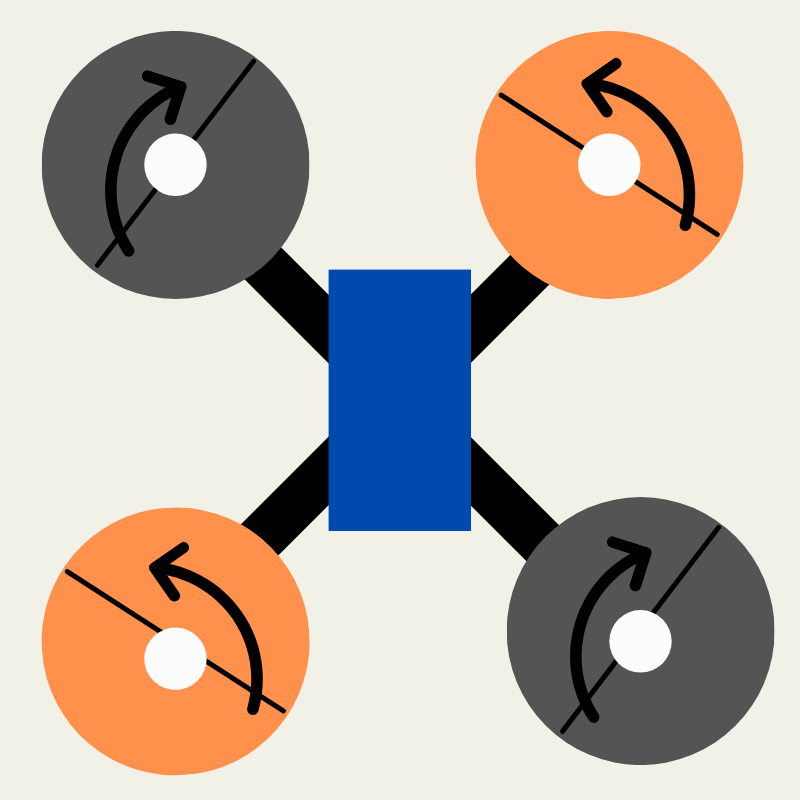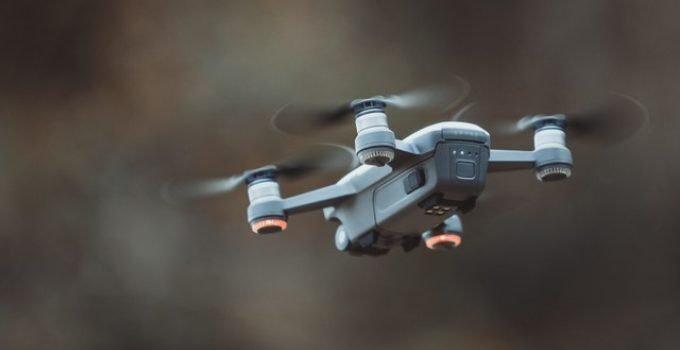With advanced technology taking over, photography gadgets have also made strides in the form of drones. These mini quadcopters not only serve photography enthusiasts or professionals but several others who have a penchant for aerial views or need quick navigation for search and rescue missions.
Drones technology has also been used in decoy operations or classified missions as espionage gadgets. Though it can be an expensive gadget if you don’t know what you want it for. Nevertheless, you can find several affordable variants that are not just fun but also easy to maneuver.
Plus, the controls can be mastered if you have an idea of how drones work. This article will answer your question about how drones fly. Along with that, you can rest assured that by the end of the article you’ll know enough about drone physics to impress folks in your circle.
Table of Contents
TYPES OF DRONES
There are two main types of drones – fixed wing type and rotary wing type.
In fixed wing platforms, the wings are fixed to the body of the aircraft (known as fuselage) and they cannot move. Boeing 737 is one such example of a fixed wing aircraft. For aircraft to take flight, it flies forward for the wings to generate lift as wings push through the air.
In rotary drones, there is a propeller or a rotary wing attached to the motor. In this, the motor spins the rotary wing to create lift as the wing spins against the air. The most common type of rotary drone is called a quadcopter. Mavic Pro 2 is one such example of a quadcopter that has four propellers and four motors.
Speaking of propellers, these are the four important types of movements you should know about. These are employed by four propellers on the drone. For instance, 1, 2, 3, and 4 are four propellers. Placed at diagonal ends, 1 and 4 spin clockwise and 2 and 3 move anticlockwise.
TYPES OF MOVEMENTS
First, let’s take a look at some terms involved in the drone mechanism.
Pitch – Pitch is known as the forward or backward movement of the drone.
Yaw – Yaw is referred to as clockwise and anticlockwise movement of a drone.
Roll – Roll, as the name suggests, is rotation of a drone to bend left or right.
Uplift/downfall – Uplift/downfall are other movements, important ones, to increase or decrease elevation of the drone. In short, it is up and down movement of a drone.
HOW DO DRONES FLY?
Now, let’s discuss the drone mechanism as length. If you have ever tried swimming, you can relate to it much easier. In swimming, you put your hands forward and move the water backwards out of your way, creating a push that moves you forward. In the same way, when the propellers spin, they push the air molecules downwards, to create an upward movement.
As we have mentioned earlier, a quadcopter is a rotary drone that uses motors and propellers. The motor spins the propellers, and the propellers further move the air molecules to pull the drone upwards. Once your drone is in the air, it is able to move forward, backward, up, down, left, right by spinning the four propellers at different speeds.
MOVEMENTS EXPLAINED

Yaw movement – Yaw which is the clockwise or anticlockwise movement requires the diagonal propellers to move at the same speed. To employ yaw to rotate left, the propellers 2 and 3 move at a high speed while the propellers 1 and 4 move at normal speed. To rotate right, the propellers 1 and 4 move at high speed while the propellers 2 and 3 move at a normal speed.
Pitch movement – Pitch, the forward and backward movement, makes use of propellers on the same side. To move forward, the propellers 3 and 4 move at a high speed while the propellers 1 and 2 move at normal speed. To move backwards, the propellers 1 and 2 move at high speed while the propellers 3 and 4 move at a normal speed.
Roll movement – Roll, the rotation to bend left or right, employs the propellers differently than previous two movements. To roll left, the propellers 2 and 4 move at a high speed while the propellers 1 and 3 move at normal speed. To roll right, the propellers 1 and 3 move at high speed while the propellers 2 and 4 move at a normal speed.
Uphill/downfall movement – This one is easier and requires all the drones to move at the same speed. To move upward or rise up, all the propellers run at high speed while to descend or move downwards, all the propellers spin at a normal speed.
It should not come as a surprise that drones need controllers to take flight. It helps you to land, navigate, and launch your drone. It comes in different forms depending on the design and model of the drone. The controller can be similar to a gaming controller or tablet or smartphone.

The controller communicates with the drone with the help of radio waves that are transmitted on 2.4 gigahertz spectrum. Some can also communicate using Wi-Fi which makes it easier for smartphones or tablets. The latest technology onboard allows the drones to fly by using GPS. Once the destination is confirmed, the sensors, motion detectors, obstacle sensors, and gyroscopic technology make it possible to navigate the drones unassisted.
TECHNIQUES
Some beginner and expert level techniques are shared below for you to master your aerial gadget.
For beginners, there are a few techniques you can try.
- Fly at different heights and different angles.
- Hover at one place, then hover and rotate the quadcopter.
- Set two targets on the ground, this will help you land, fly, and move it regularly between two spots.
- Try rotating it in different patterns such as circle or square.
For those who have passed the beginner levels, there are a few techniques for you to try targeted at experienced pilots.
- Fly your quadcopter in a figure 8 pattern as it requires control and fly the drone front facing forwards till the pattern is complete.
- Also known as bank turns, this also requires forward movement too. Keep the pitch slightly forward, apply the throttle, and roll the drone in the direction of the turn.

